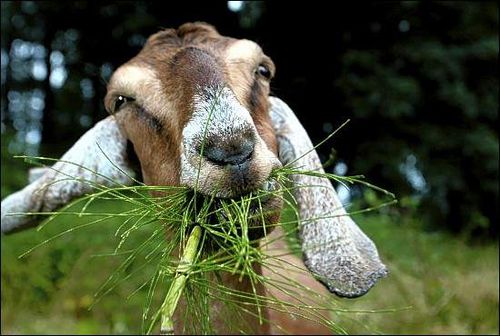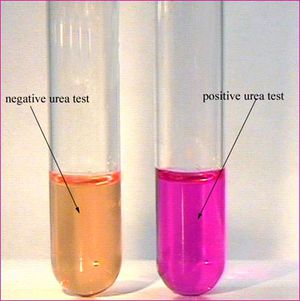Mycoplasma yeatsii: Difference between revisions
| Line 18: | Line 18: | ||
==Metabolism== | ==Metabolism== | ||
[[File:urease test.jpg|thumb|mycoplasma yeatsii is negative to the urea test]] | [[File:urease test.jpg|thumb|mycoplasma yeatsii is negative to the urea test]] | ||
As the carbon sources that have been found are organic compounds such as glucose and | As the carbon sources that have been found are organic compounds such as glucose and mannose. Sterol and arginine are important for their growth. They grow in aerobic conditions. They don’t decompose urea.<sup>[1]</sup> | ||
==Ecology== | ==Ecology== | ||
Revision as of 02:35, 18 May 2013
caption]]
Higher Order
Higher order Domain (bacteria), PHYLUM(Tenericutes ), CLASS (mollicutes), ORDER (Mycoplasmatales), FAMILY (Mycoplasmataceae ), GENUS(mycoplasma) NCBI
Classification
mycoplasma yeatsii
Description and significance
Their colony is called mollicutes because they offer resistance to penicillin and they are unable to revert the bacterial form under antibiotic circumstances. They belong to the genus mycoplasma due to their morphology and some metabolic characteristics. Also the majority of mollicutes are obligate parasites since they don’t synthesize essential anabolites such as purines and most aminoacids. Mycoplasm yeatsii is considered to affect goats but some studies don’t show this conclusion. However, a circular plasmid pMyBK1 was detected in one strain ( GIH), and it turn out to be a stable vector, therefore it could be used for carrying out heterologous expression.[1]
Genome structure
Scientists have found a circular plasmid called pMyBk1 that can function as a stable vector which can be used for heterologous expression. This plasmid contains two open reading frames( ORF) that are very important on the maintenance of the stability and replication of this plasmid. Five chromosomal ORFs with a significant similarity to OPRf2 of the plasmid are thought to be of plasmid origin. Related to the the genetic material of this microorganism, nitrogenated bases such as guanosine and cytosine make a 26.6% of the DNA.[2]
Metabolism
As the carbon sources that have been found are organic compounds such as glucose and mannose. Sterol and arginine are important for their growth. They grow in aerobic conditions. They don’t decompose urea.[1]
Ecology
Mycoplasma yeatsii strains have been found in the ear canal of the goats and they are considered natural inhabitants of goats.This is according with an study carried on in 2009. None of the studies reviewed show conclusive pathogenic characteristics, even though it is classified into the class of mollicutes.
Habitat and Pathology
From a study carried out in 1994, an strain of mycoplasma yeatsii ( GIH (t)) was obtained from the external ear canals of goats in Australia, also from the retropharyngeal lymph node. Other strains that were similar serologically to the previous ones, were found in the external ear canal of American goat, which was identified as GM790A. This strain is similar to the one found in Australia. It was also isolated from the lungs, spleen, and milk of two infected goats. In one experiment, one of the goats had an elevated temperature and was mastitic, and the GM790 was inoculated into the teat canals, leading to mastitis and termination of lactation in three days.[1] or [2]
References
[1] j.Massa, J G Tully, july 1994, mycoplasma auris sp. Nov., mycoplasma cottewii sp.nov.,and mycoplasma yeatsii sp. Nov., New stero-requring mollicutes from external ear canlas of goats. International journal of systemc bacteriology, july 1994, p.479-484
[2] Beathany N. kent, Mark F. Foecking, Michael J. Calcutt. Development of novel plasmid as shuttle vector for heterologous gene expression in mycoplasma yeatsii. Journal of microbiological methods ( 2012) 121-127.
[3] Otere Negrete Jimena, Jamarillo Meza Laura, Association of Raillietia caprae with the presence of mycoplasmas in the external ear canal of goats. Preventive veterinary Medicine 92 ( 2009) 150-153.


